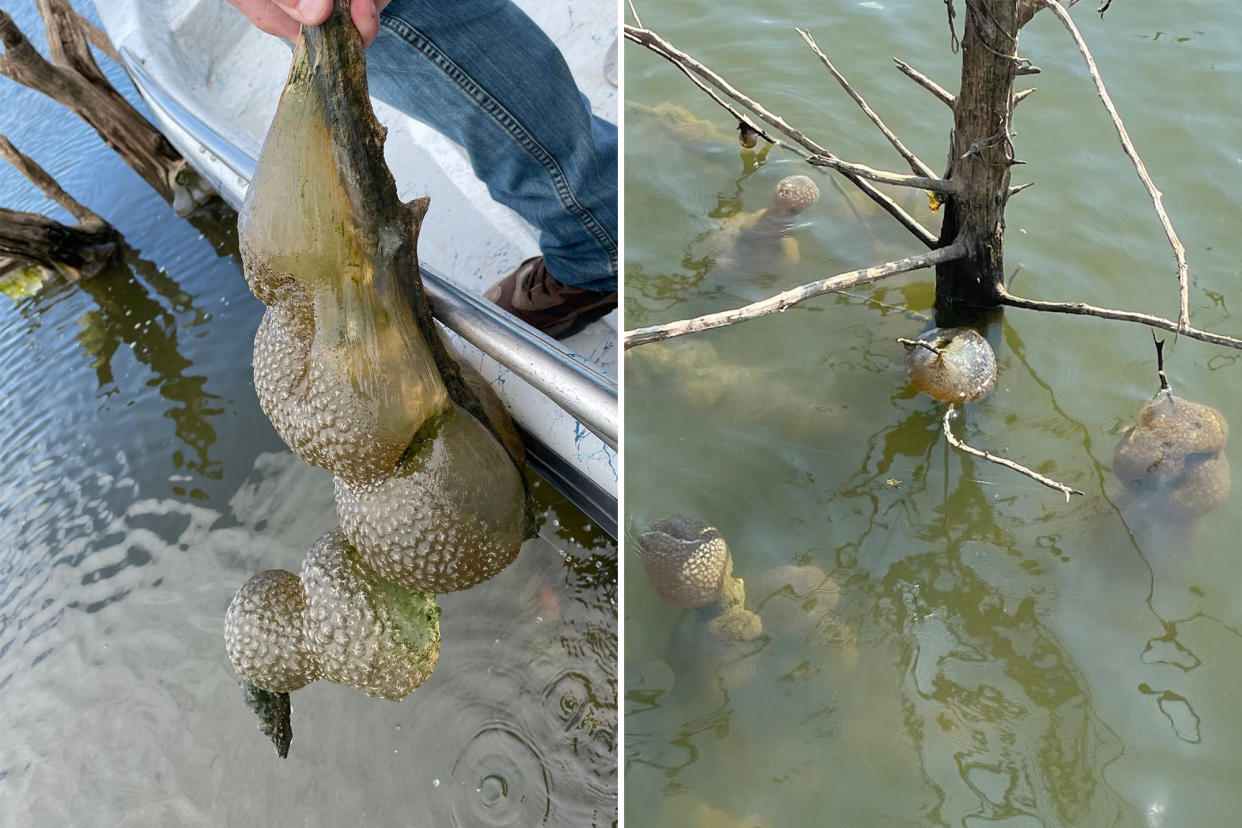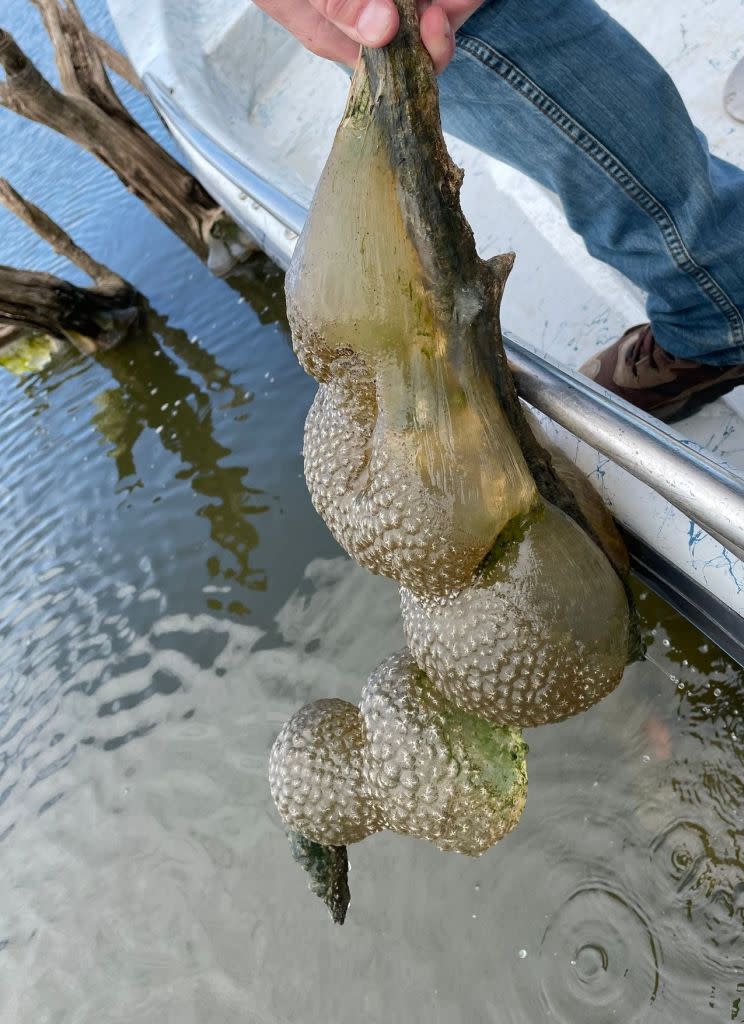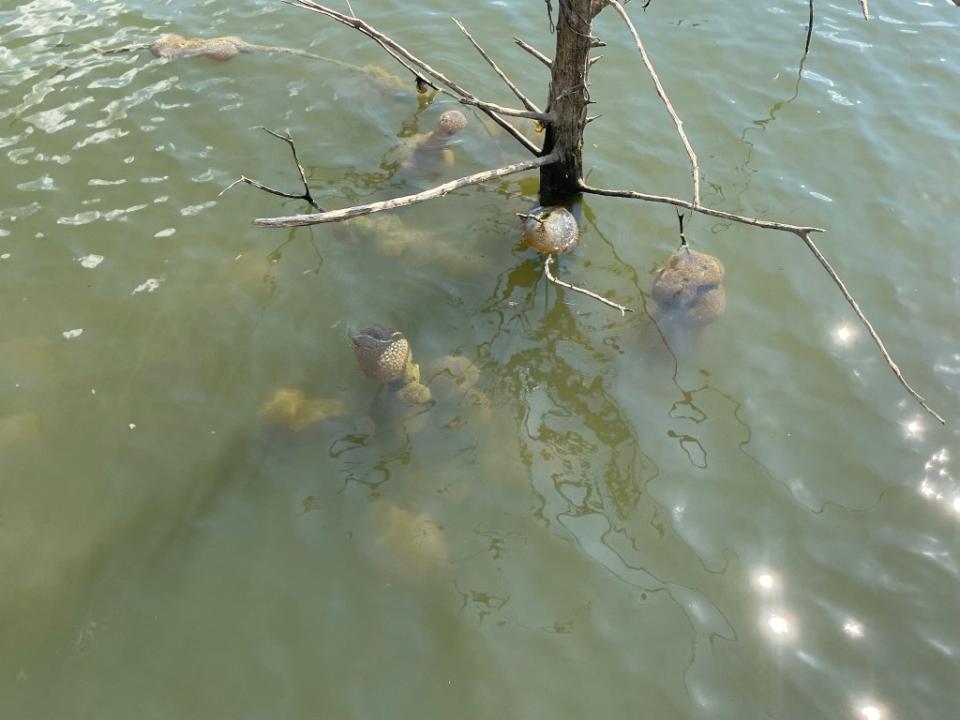Mysterious ‘Godzilla eggs’ spotted in lake: ‘What in the alien invasion is this?’

They’re UFOs — unidentified floating objects.
Online denizens were left baffled after mysterious blobs were spotted in an Oklahoma lake — with many comparing them to “alien eggs.”
The
highlighted these bizarro objects, which were found in McGee Creek Reservoir, in a Facebook post going viral.

“If you’re out boating somewhere like McGee Creek Reservoir you may notice these strange jelly-like balls hanging from submerged tree limbs,” the agency wrote in the March 12 post.
Accompanying photos show the hard-shelled, gelatinous orbs dangling from an underwater tree, like macabre Christmas decorations or the spawn of some giant, extraterrestrial toad.
Needless to say, the anomalous structures flabbergasted the Facebook masses.
“What in the alien invasion is this?” questioned one aghast poster, while another joked that they were “Godzilla eggs.”
“All I can imagine is if I touched it or it touched me while in the water. I would freak out,” declared a third.
As it turns out, these slimy spheres are actually native aquatic microorganisms known as bryozoans.

Colloquially called “moss animals,” these microscopic filter feeders form colonies by building coral-like exoskeletons, which are found attached to submerged rocks, branches and other structures.
This carapace is comprised of a substance called chitin, which hardens when dry to “preserve the organism until rehydrated” like a sentient freeze-dried meal.
Don’t be alarmed by their Martian-like countenance — these critters “are of no danger to you or wildlife,” the ODWC explained.
In fact, bryozoans are conversely an “indicator of good environmental quality and clear water,” per the post.
“These animals are an important part of the ecosystem because they help clean the water and serve as prey for mussels, snails and even small fish,” the nature agency wrote. “They often spread through water connectivity or even by passing through the intestinal tract of fish or birds!”


